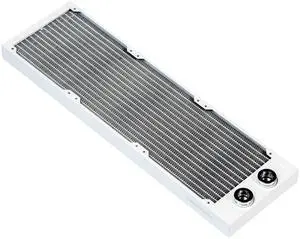
- Brand: Phanteks
- Type: Radiator
- Radiator Size: 470x140x30 mm
- Radiator Material: Fins: T2 Copper Water Chamber: H62 Brass Thread Insert: H59 Brass Side Pane: 430 Stainless Fittings: Brass Fitting Insert: ABS
- Model #: PH-GEF-RAD423_WT
- 443.89SR –
- 164.09SR Shipping
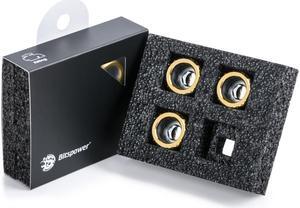
- Type: Fittings
- Model #: BP-TBEMLA16-4P
- 194.09SR
- 176.84SR –
- Save: 8%
- 105.19SR Shipping
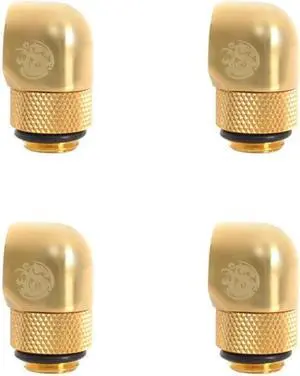
- 250.16SR
- 237.22SR –
- Save: 5%
- 105.19SR Shipping
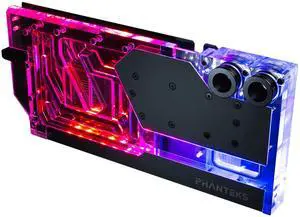
- Brand: Phanteks
- Type: GPU Water Block
- Block Compatibility: ASUS ROG Strix GeForce RTX® 4090 24GB ASUS ROG Strix GeForce RTX® 4090 OC Edition 24GB ASUS TUF-RTX4090-O24G-GAMING ASUS TUF-RTX4090-24G-GAMING
- Block Dim.: 11.34 x 5.17 x 1 in (288.15 x 131.244 x 26 mm)
- Model #: PH-GEF_GPU4090AS_DBK01
- 1,062.59SR –
- 213.34SR Shipping
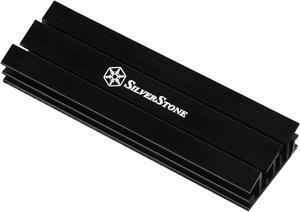
- Block Compatibility: M.2 length support: 2280 (22mm x 80mm)
- Type: Cooling kit
- Block Dim.: Heatsink : 70mm (W) x 10mm (H) x 20mm (D), 16.1g Blue Pad : 70mm (W) x 1mm (H) x 20mm (D), 3.25g Gray Pad 1 : 60mm(W) x 1mm(H) X 20mm(D), 2.8g Gray Pad 2 : 60mm(W) x 1.5mm(H) X 20mm(D), 3.7g Thermal pad thickness: 1.0mm, 1.5mm
- Block Material: Aluminum, silicone
- Model #: SST-TP02-M2
- 120.74SR –
- 184.69SR Shipping
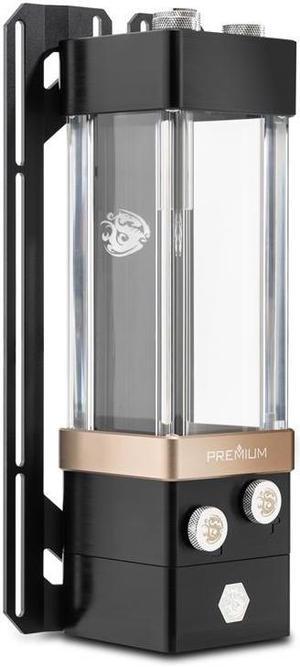
- Type: Reservoir
- Model #: BPPRE-WTCR150-PHCL
- 1,531.19SR
- 1,380.22SR –
- Save: 9%
- 105.19SR Shipping
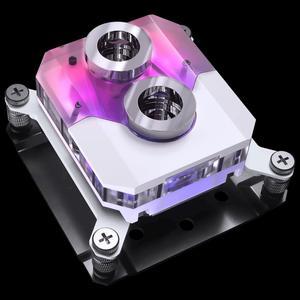
- Type: CPU block
- Block Compatibility: Intel: LGA 1700 AMD: AM4 / AM5
- Specification: LED Type: Digital-RGB LED strip hard board (+5V, data, empty, Ground) LED strip length: 65.9 mm Number of LEDs: 2x 5pcs Input Voltage: +5V Current (Single strip) Max: 0.15A Current (Dual Strip) Max: 0.3A Wattage (Single strip) Max: 0.75W Wattage (Dual Strip) Max: 1.5W Copper Base Dimension (WxDxH): 60.2 x 51 x 3.7mm (2.37 x 2 x 0.15in) Copper Thickness: 3.7 mm Fin Construction: 0.08 mm fin gap / 0.08mm thickness Materials: Acrylic / POM / Copper Aluminum Cover Fitting: Nickel Plated Brass Fitting Insert: ABS Supported Tube Size Hard Tube: OD 16mm Soft Tube: OD 16mm; ID 10mm Tube Compatibility Hard Tube: PETG, Acrylic Tube Soft Tube: PVC Tube
- Package Contents: Glacier 450CPU Block 1x Push-in Fitting (Pre-installed) 2x Fitting ...
- Model #: PH-GEF_CPU450_DWT
- 399.04SR –
- 164.09SR Shipping
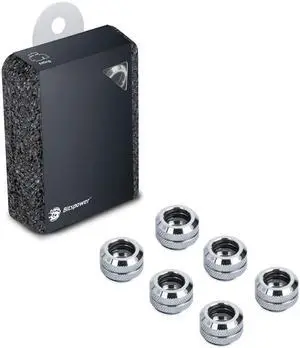
- Type: Fittings
- Model #: BP-EML-6P
- 129.39SR
- 112.14SR –
- Save: 13%
- 119.95SR Shipping
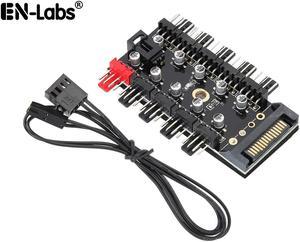
- Type: Fan power cable
- Type: PWM 4pin fan hub splitter
- Color: Black
- Length: 16inches / 40CM
- Model #: PWMHUB10S
- 93.02SR –
- Free Shipping
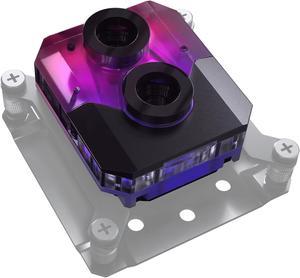
- Type: Complete DIY Water-Cooling Kit
- Block Compatibility: Intel: LGA 1700 AMD: AM4 /AM5
- Block Dim.: 72 x 64 x 25.7mm (2.83 x 2.52 x 1in)
- Radiator Size: 360mm
- Model #: PH-GEF_CPU450_DBK
- 399.04SR –
- 164.18SR Shipping
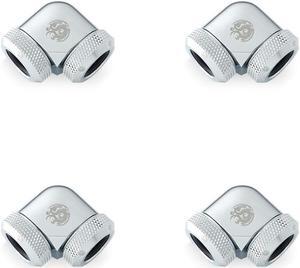
- Model #: BP-E90DML-4P
- 215.61SR
- 189.77SR –
- Save: 11%
- 119.95SR Shipping
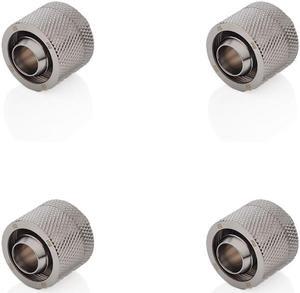
- Model #: BP-BSCPF-CC3V3-4P
- 181.15SR
- 155.27SR –
- Save: 14%
- 119.95SR Shipping
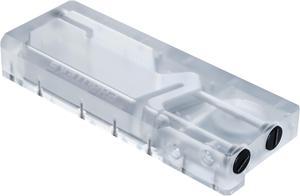
- Brand: Phanteks
- Series: Glacier R220C
- Type: Combo Reservoir
- Specification: Pump Compatibility: DDC Installation Compatibility: 120/140 mm fan/radiator Seal O-Ring: DuPont VITON Reservoir - ID: 126.72 /W: 1.78 (AS049) Color: Transparent RGB LED type: Digital-RGB (addressable) LED Number: 5050, 18pcs LED Electricity Spec: 5V/ 0.7A/ 3.5W Capacity: 200ml Materials: Acrylic body, Acrylic backplate, Steel bracket Max Water Loop Temperature: 60 degree C Fill Port: 1 x G 1/4 No. of Inlet: 3 x G 1/4 No. of Outlet: 1 x G 1/4
- Model #: PH-R220C_02
- 178.24SR –
- 164.22SR Shipping
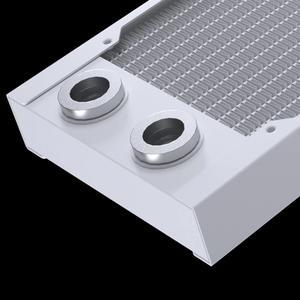
- Brand: Phanteks
- Radiator Size: 410 x 123 x 30mm (16.14 x 4.84 x 1.18in)
- Specification: Material(s) Tubes: H90 Brass Fins: T2 Copper Water Tank: H62 Brass Thread Insert: H59 Brass Side Panel: 430 Stainless Steel Fitting: Nickel Plated Brass Fitting Insert: ABS Supported tube size Hard Tube: OD 16mm Soft Tube: OD 16mm; ID 10mm Tube Compatibility Hard Tube: PETG, Acrylic tube Soft Tube: PVC tube
- Package Contents: 360RAD-30 White 1x Push-in Fitting (Pre-installed) 2x Fitting Inserts (for soft tube) 3x M4x5 screws 12x M4x30 screws 12x M4x36 screws 12x Manual 1x
- Model #: PH-GEF_RAD363_WT
- 399.04SR –
- 164.09SR Shipping
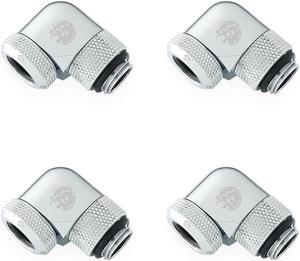
- Model #: BP-E90RML-4P
- 301.88SR
- 250.16SR –
- Save: 17%
- 119.95SR Shipping
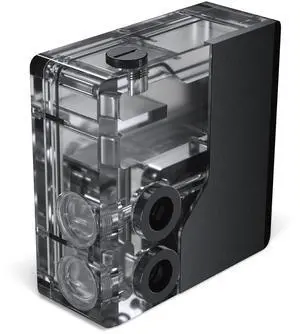
- Brand: Phanteks
- Type: Reservoir
- Color: Black
- Reservoir Dim.: 45 x 120 x 124 mm
- Model #: PH-GEF_RES120-B_DBK01
- 487.59SR –
- 164.09SR Shipping
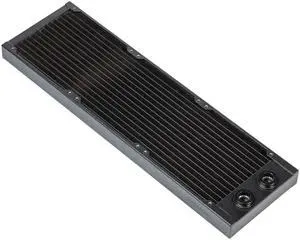
- Brand: Phanteks
- Type: Radiator
- Radiator Size: 470x140x30 mm
- Radiator Material: Fins: T2 Copper Water Chamber: H62 Brass Thread Insert: H59 Brass Side Pane: 430 Stainless Fittings: Brass Fitting Insert: ABS
- Model #: PH-GEF-RAD423_BK
- 487.59SR –
- 164.19SR Shipping

- Type: Coolant
- Coolant Capacity: 500ml
- Model #: BPTA-CMCD500
- 64.65SR –
- 120.22SR Shipping
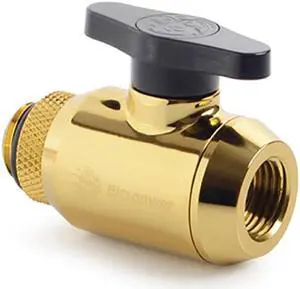
- Type: Fittings
- Model #: BP-MVVFRGIG14-TBBK
- 189.77SR
- 176.84SR –
- Save: 6%
- 105.19SR Shipping
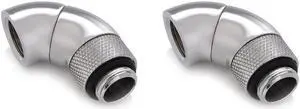
- 183.52SR
- 159.59SR –
- Save: 13%
- 105.19SR Shipping
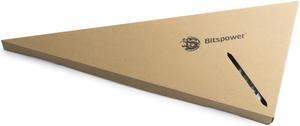
- Model #: BP-BHT12SL-90R
- 185.46SR –
- 120.22SR Shipping
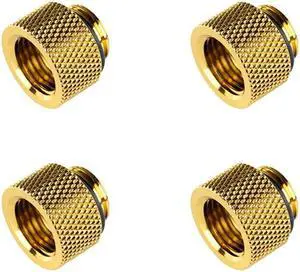
- 86.26SR –
- 105.19SR Shipping
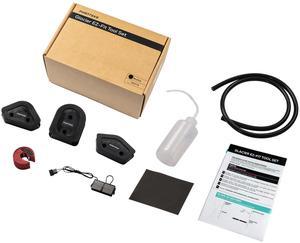
- Type: Tool Set
- Specification: Materials Tube Cutter: Plastic + Steel Bending Insert: Rubber Bending Guides: PP Squeeze Bottle: PE 24-Pin Jumper: PP Sandpaper: Paper Tube Cutter Compatibility 16 mm Hard Tube Bending Insert Compatibility For ID:12mm / OD:16mm Hard Tube Bending Guides Compatibility 16 mm Hard Tube Squeeze Bottle Capacity: 250 ml Sandpaper Grit: 240
- Package Contents: Tube Cutter 1x Silicone Bending Insert 1x Bending Guides (set) 1x Squeeze Bottle 1x 24-Pin Jumper 1x Sandpaper 1x Manual 1x
- Model #: PH-GEF_TLS_BK
- 111.54SR –
- 164.10SR Shipping
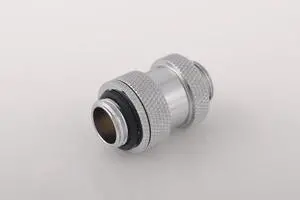
- Type: Fittings
- Model #: BP-DG14AALPI
- 36.66SR –
- 105.19SR Shipping

- 120.76SR
- 103.51SR –
- Save: 14%
- 105.19SR Shipping
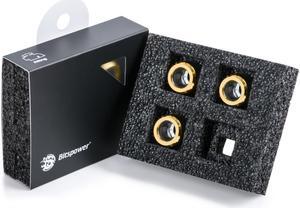
- Type: Fittings
- Model #: BP-TBEMLA12-4P
- 155.27SR
- 142.34SR –
- Save: 8%
- 119.95SR Shipping
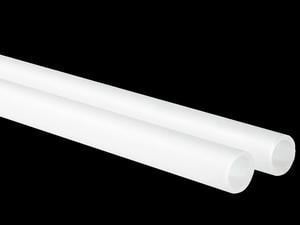
- Type: Hard tube
- Tube Dim.: 2x 90 cm
- Tube Material: HI-PMMA
- Package Contents: PH-GEF_HT16_FR 2x
- Model #: PH-GEF_HT16_FR
- 111.54SR –
- 144.37SR Shipping
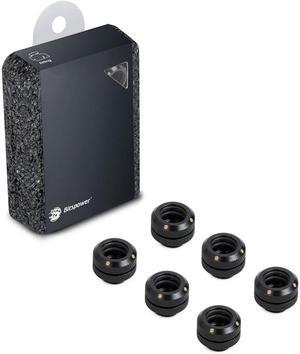
- 120.76SR
- 107.82SR –
- Save: 10%
- 119.95SR Shipping
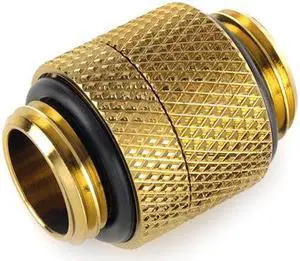
- 51.75SR –
- 105.19SR Shipping
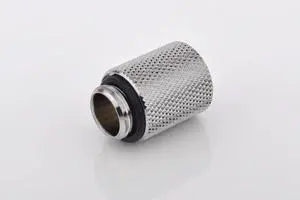
- Type: Fittings
- Model #: BP-WTP-C61
- 23.71SR
- 21.56SR –
- Save: 9%
- 105.19SR Shipping
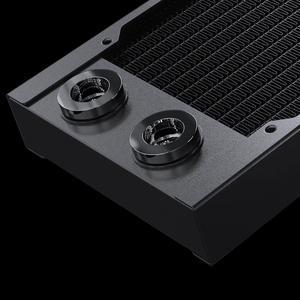
- Radiator Size: 410 x 123 x 30mm (16.14 x 4.84 x 1.18in)
- Specification: Tubes: H90 Brass Fins: T2 Copper Water Tank: H62 Brass Thread Insert: H59 Brass Side Panel: 430 Stainless Steel Fitting: ED Black Brass Fitting Insert: ABS Supported tube size Hard Tube: OD 16mm Soft Tube: OD 16mm; ID 10mm Tube Compatibility Hard Tube: PETG, Acrylic tube Soft Tube: PVC tube
- Package Contents: 360RAD-30 Black 1x Push-in Fitting (Pre-installed) 2x Fitting Inserts (for soft tube) 3x M4x5 screws 12x M4x30 screws 12x M4x36 screws 12x Manual 1x
- Model #: PH-GEF_RAD363_BK
- 399.04SR –
- 164.09SR Shipping
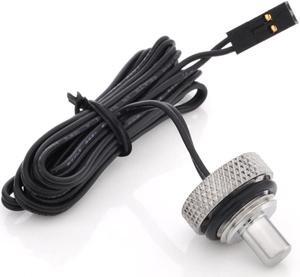
- 40.97SR
- 38.81SR –
- Save: 5%
- 105.19SR Shipping
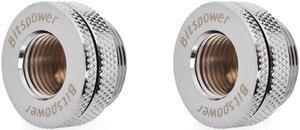
- 93.12SR
- 77.64SR –
- Save: 16%
- 119.95SR Shipping
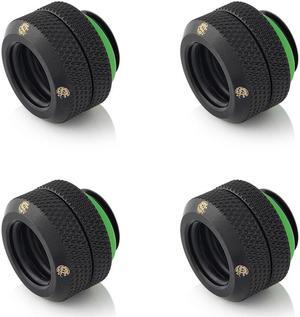
- 86.26SR –
- 119.95SR Shipping
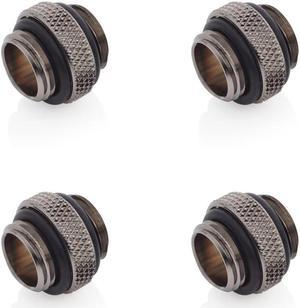
- 77.64SR –
- 119.95SR Shipping
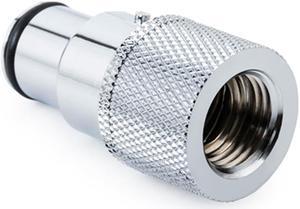
- Type: Fittings
- Model #: BP-QFMIG14
- 116.45SR
- 107.82SR –
- Save: 7%
- 119.95SR Shipping
DIY cooling is one of the most cost-effective ways of boosting the performance of a computing system. Speed is usually the first casualty of an overheating rig. When a system becomes too hot, temperature sensors on the motherboard send a signal to the processor requesting it to slow down. Excessive heat also has the potential to cause irreversible damage to system components. For example, if hard drive cooling fails to maintain the temperature below 86 degrees, you run the risk of data loss or corruption. Newegg has all the accessories you need to set-up the cooling system of your choice.
Air Cooling for Fast and Affordable Cooling
Air DIY cooling uses fans to keep the internal environment of your system cool. They are easy to set up and are very durable. As this cooling option does not have an abundance of components, there is very little that can go wrong. CPU fans and heatsinks work together to dissipate excess heat, and can be set up in one of two methods:
- Positive pressure configuration
- Negative pressure configuration
Positive Pressure Configuration for Quick Setup
Under this setup, the Cubic Feet Per Minute (CFM) of the intake fans exceeds that of the relevant exhaust fans. The effect is that the pressure within the system exceeds the pressure without. This pushes air and dust out of the rig, using every opening as an exhaust avenue. One drawback of this setup is that it can only manage average cooling. This configuration cannot sufficiently cool GPUs that utilize Direct Heat Exhaust (DHE). To enhance the cooling capacity of this type of cooling, place your DIY heatsink strategically. That means putting these metal sheets at the rear, sides, and front of your CPU.
Negative Pressure Configuration for Better Cooling
In a negative pressure configuration, the exhaust fans have a higher CFM than their equivalent intake fans. This creates a pseudo-vacuum within the system, which proves very useful for keeping the rig cool. It cools the system better than the positive pressure setting, and can even work well with DHE GPUs.
Liquid Cooling for the Most Efficient Cooling
Liquid cooling is the preferred cooling system for gamers and other performance-reliant users. To max out the cooling effects of this setup, use a DIY radiator to dissipate excessive heat from the liquid coolant. The faster the DIY radiator loses the heat via the fins, the cooler the system and the faster it operates. There are two ways you can go about this DIY cooling strategy:
- Closed-loop
- Open-loop
Closed-Loop for Easy Installation
These rigs are ready for fitting right out of the box. They're cheaper than open-loops, easier to maintain and require minimal maintenance. They'll integrate with your current cooling mechanisms without forcing you to do an overhaul of your system. You'll not need any extra CPU accessoriesto get this configuration up and running.
Open-Loop With GPU Mounting Kit for Aesthetics
Open-loop cooling is very appealing to the eye, but that is at the cost of ease-of-use. It is very maintenance-reliant and equally hard to set up. A GPU mounting kit should help, however.
